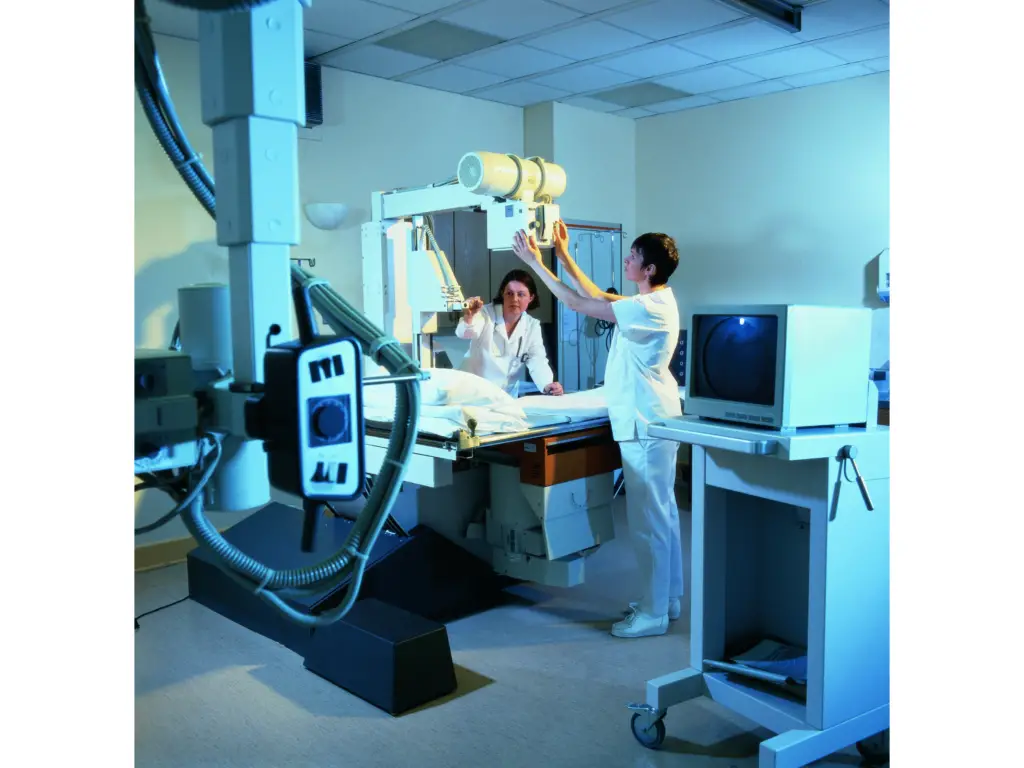Choosing a career in Radiologic Technology offers an exciting path in the healthcare industry for those intrigued by medical imaging and patient care. As medical advancements continue, the demand for skilled Radiologic Technologists, who play a crucial role within the health care team, is on the rise. These health professionals are experts in using imaging equipment to produce detailed images of internal structures, aiding in the diagnosis and treatment of patients.
A career as a Radiologic Technologist, often referred to as a Rad Tech or Radiology Tech, is not just rewarding but also brimming with opportunities for professional growth. Whether it’s mastering Magnetic Resonance Imaging (MRI), engaging in Nuclear Medicine, or excelling in Vascular Sonography, this field offers a wide range of specialties. The role requires not only technical skills and knowledge of medical terminology but also excellent communication skills and a commitment to patient safety and care.
The journey to becoming a Radiologic Technologist typically starts with enrolling in a Radiologic Technology Program, often available at community colleges or specialized schools. These educational programs blend classroom instruction with hands-on clinical training, preparing students for the real-world clinical setting and ensuring they acquire the necessary foundational skills for success.
Educational Pathways in Radiologic Technology
The journey to becoming a Radiologic Technologist begins with the right education. One of the primary pathways is through an Associate Degree in Radiologic Technology, typically a two-year program offered by community colleges and technical schools. This Associate Degree Program lays the foundation for a career in radiologic imaging by covering essential subjects such as medical terminology, anatomy, radiation safety, and imaging techniques.
For those aspiring to further specialization or leadership roles within the medical imaging industry, pursuing a Bachelor’s Degree in Radiologic Technology can be a beneficial step. This four-year program delves deeper into the complexities of diagnostic imaging examinations, including advanced modalities like Magnetic Resonance Imaging (MRI) and Nuclear Medicine. It also emphasizes critical thinking, patient care, and management skills, providing a more comprehensive education in the field.
Certificate Programs offer another route, especially for those who already possess a degree in another field or radiologic technicians seeking specialization. These programs can range from six months to a year and focus on specific areas such as mammography, MRI, or vascular sonography. They combine classroom learning with clinical experiences, allowing students to develop hands-on skills in particular imaging modalities.
Regardless of the chosen educational path, clinical training is a cornerstone of radiologic technology education. Clinical Experiences in real healthcare settings are integral, as they allow students to apply their knowledge, interact with patients, and learn from experienced professionals. This hands-on approach ensures that graduates are not only knowledgeable but also adept at patient positioning, understanding the nuances of soft tissue imaging, and ensuring the safety of patients during diagnostic procedures.
Certification and Clinical Experience: Keys to Success in Radiologic Technology
Becoming a certified Radiologic Technologist is a crucial step in your career path. After completing the educational requirements, whether through an Associate Degree program, a Bachelor’s program, or Certificate Programs, the next milestone is passing the certification exam. The American Registry of Radiologic Technologists (ARRT) offers the primary certification exam, which assesses knowledge in radiographic procedures, patient care, radiation protection, image production, and radiation physics. This Certification Exam is vital as it not only validates your skills and knowledge but also is a requirement for licensure in many states.
In addition to national certification, many states require licensure to practice as a Radiologic Technologist. The requirements vary by state but generally include passing the ARRT examination or a state-administered exam. Therefore, it’s essential to understand the specific licensing requirements of the state where you intend to work and ensure that your Radiologic Technology Program meets those standards.
Clinical Experiences play a significant role in the journey to becoming a Radiologic Technologist. These real-world clinical settings offer invaluable hands-on training and exposure to a wide range of diagnostic imaging procedures. Through clinical rotations, students learn to apply theoretical knowledge to practice, develop essential patient care skills, and gain proficiency in various imaging modalities, including X-ray, CT, MRI, and ultrasound.
Moreover, clinical training is not just about acquiring technical skills; it’s also an opportunity to develop soft skills such as communication, empathy, and teamwork, which are crucial in patient-centered fields like radiologic technology. Effective patient positioning, ensuring the safety of patients, and producing diagnostic images of high quality are among the competencies honed during clinical rotations.

Advancements and Specializations in Radiologic Technology
The field of Radiologic Technology is continuously evolving, driven by advancements in medical imaging technology and the growing need for specialized healthcare services. This dynamic environment offers Radiologic Technologists numerous opportunities for professional growth and specialization, particularly in areas such as Magnetic Resonance Imaging (MRI), Nuclear Medicine, and Vascular Sonography.
Magnetic Resonance Imaging (MRI):
Specializing in MRI involves operating sophisticated imaging equipment that uses powerful magnets and radio waves to create detailed images of internal structures. MRI technologists require additional education and certification, typically through post-primary certification pathways offered by the ARRT. Specializing in MRI not only enhances a technologist’s skill set but also opens up opportunities in various clinical settings, from hospitals to stand-alone imaging centers.
Nuclear Medicine:
This specialization involves using radioactive materials, known as radiopharmaceuticals, to perform diagnostic imaging examinations and treat certain diseases. Nuclear Medicine Technologists must complete specific educational and clinical training to safely handle and administer these substances. This field requires a deep understanding of radiation safety and the biological effects of radiation, making specialized education and certification crucial.
Vascular Sonography:
This area focuses on imaging the body’s vascular system to assess the health of veins and arteries. Vascular Sonographers use ultrasound equipment to perform examinations that help diagnose conditions affecting blood flow. Specialization in vascular sonography requires additional education, typically through a certificate program or specialized sonography training, and offers a unique niche within the imaging field.
Continuing education is a critical aspect of maintaining and advancing a career in Radiologic Technology. The healthcare landscape is constantly changing, and staying abreast of the latest imaging techniques, safety protocols, and patient care standards is essential. Many Radiologic Technologists choose to pursue additional certifications in specialized areas, attend professional development courses, or participate in professional society meetings to enhance their skills and knowledge.
Furthermore, the role of Radiologic Technologists extends beyond performing diagnostic imaging procedures. They are integral members of the health care team, contributing to patient care, diagnosis, and treatment planning. Advanced education and specialization can lead to roles in management, education, or research, providing a wealth of opportunities for those looking to advance their careers.

Clinical Experience Requirements
Clinical internships in radiologic technology are a cornerstone of any Radiologic Technology Program, blending academic study with practical, hands-on experience. Typically, the duration of clinical internships varies, often spanning the entire length of the degree program, which can be two years for an Associate Degree or four years for a Bachelor’s Degree. These internships are meticulously integrated into the curriculum to ensure that students apply theoretical knowledge in real-world settings, under the supervision of experienced professionals.
The importance of these clinical internships cannot be overstated. They provide students with the opportunity to work directly with patients, develop essential technical skills, and learn the intricacies of patient care and safety. By working in a variety of clinical settings, students gain a comprehensive understanding of the radiologic technology field and are better prepared for their future careers.
Regulations for licensing and certification.
Obtaining ARRT certification and state licensure is a crucial step for aspiring Radiologic Technologists. The process typically involves graduating from an accredited program, followed by exam preparation and successful completion of the certification exam. Study times for the ARRT certification can vary, with candidates often spending several months preparing for the exam to ensure a comprehensive understanding of all subject areas.
Once ARRT certification is achieved, radiologic technologist licensing requirements vary by state but generally involve submitting proof of certification and possibly passing a state-specific exam. It’s important for candidates to familiarize themselves with the specific requirements of the state where they wish to practice.
Part-time vs. Full-time Study Options
Part-time radiologic technologist programs offer flexibility for students who may need to balance work, family, or other responsibilities with their education. These programs typically extend beyond the traditional two or four years required for full-time study, depending on the number of courses taken each semester. On the other hand, full-time study options are more intensive and allow students to complete their degree and enter the workforce more quickly, but require a significant time commitment and may not be feasible for everyone.
The Importance of Continuing Education
Continuing education in radiology is essential for Radiologic Technologists to stay current with technological advancements, regulatory changes, and new health care protocols. Specializing in radiologic technology through additional certifications or advanced degrees can enhance career prospects and expertise in specific areas such as MRI, CT, or mammography. Ongoing education is not only a requirement for maintaining certification and licensure but also a commitment to professional development and patient care excellence.
Conclusion
In conclusion, the journey to becoming a Radiologic Technologist is multifaceted, combining rigorous academic study with essential clinical internships. Achieving ARRT certification and state licensure marks a significant milestone, enabling practitioners to embark on a rewarding career path. The choice between part-time and full-time study depends on individual circumstances, but both paths lead to the same goal. Furthermore, continuing education plays a crucial role in maintaining proficiency and advancing within the field. As technology and healthcare practices evolve, ongoing learning ensures that Radiologic Technologists remain at the forefront of patient care and medical innovation.

